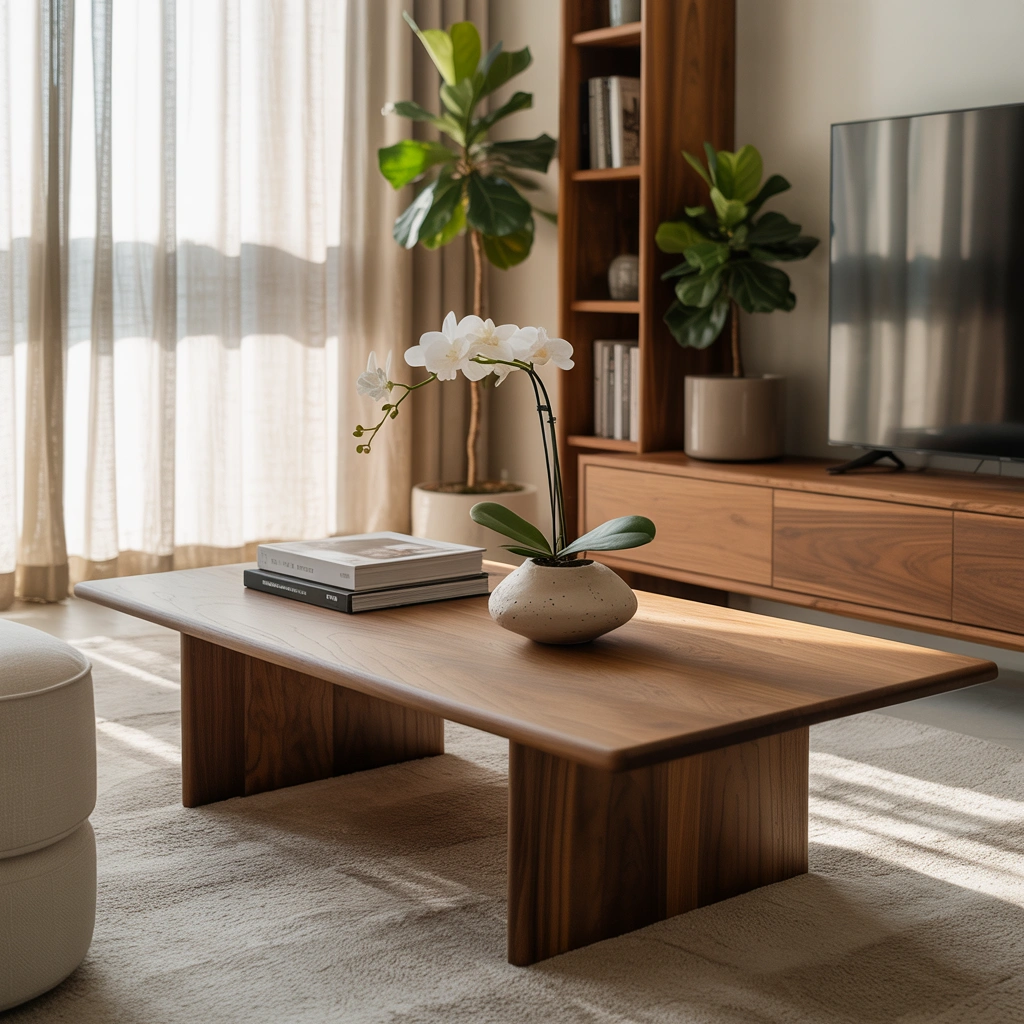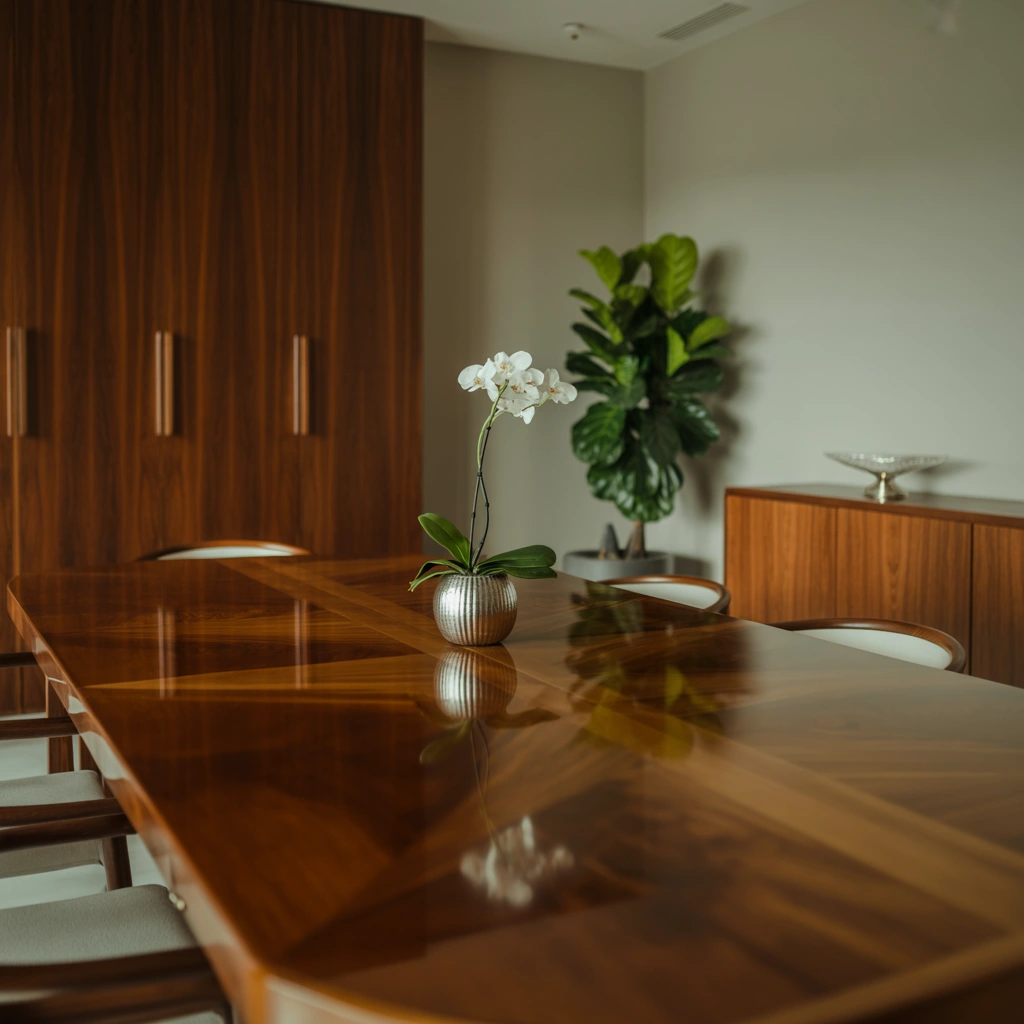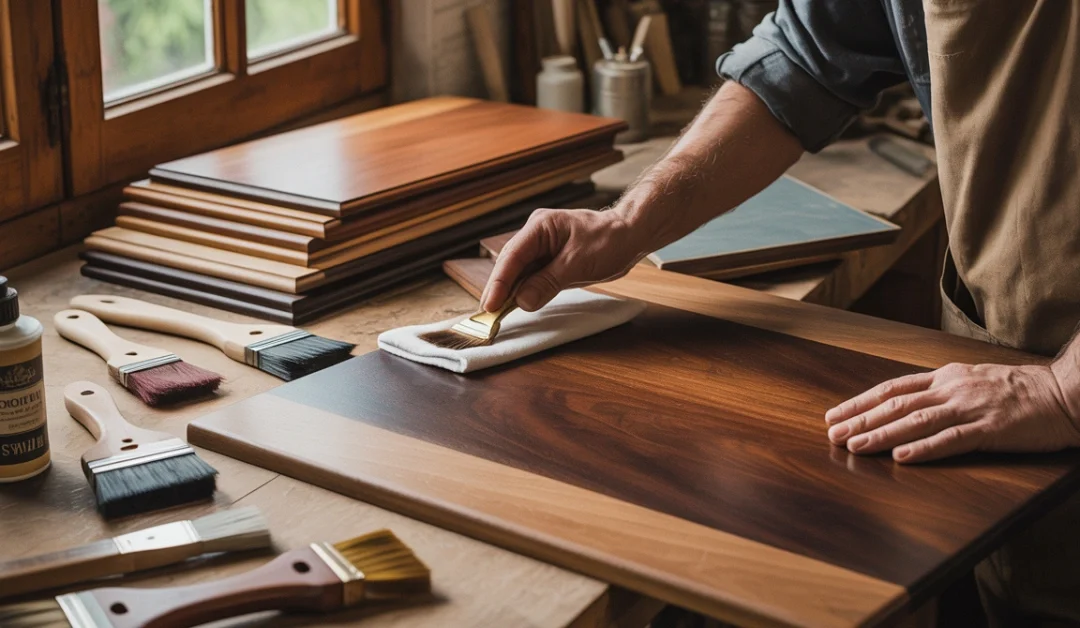Wood finishing is done to make furniture look nice and last longer. It is used to protect the wood from water, bugs, and daily wear. A good finish can turn a plain wooden table into something that looks like it came from a store.
1. How does finishing improve the life of wood furniture?

Finishes are applied to stop the wood from soaking up moisture. This helps avoid rotting and warping. They also block UV rays, which can fade colors over time.
What role does finishing play in home decor?
A finished piece of wood furniture can match the style of a room. For example, a dark mahogany table might look formal, while a whitewashed coffee table feels cozy. For ideas on matching finishes with decor, read about curtain colors for every room.
2. What are the basics of wood finishing, and how do they apply to my project?
What exactly is wood finishing?
Wood finishing is the process of adding a layer to the surface of wood. This layer can be painted, stained, or clear coats like varnish. It is done to make the wood smooth and pretty.
What are the steps in wood finishing?
- Sanding: Makes the wood smooth.
- Staining: Adds color.
- Sealing: Protects the stain.
- Topcoat: Gives shine and strength.
How do finishes protect and beautify wood surfaces?
Finishes are applied to stop the wood from getting wet or scratched. They also add color and shine. For example, a dark stain can make a pine table look like expensive walnut.
What tools are needed for basic wood finishing?
- Brushes for applying stain and varnish.
- Sandpaper in different grits (120, 220).
- Cloths for wiping off excess stain.
- Gloves to keep hands safe.
Which materials are essential for beginners?
- Stain: Liquid or gel.
- Sealer: Like polyurethane.
- Varnish: For extra protection.
- Paint thinner (if using oil-based products).
3. What types of wood finishes are available, and which one should I choose?
Oil-based vs. water-based finishes – what’s the difference?
Oil-based finishes take longer to dry but are tough and shiny. Water-based finishes dry fast and are easier to clean. Both are used to protect wood, but the choice depends on the project.
Varnish, shellac, lacquer, or polyurethane – which is best for my project?
- Varnish: Used outdoors because it resists the sun and rain.
- Shellac: Good for small items like picture frames.
- Polyurethane: Common for floors and tables because it is strong.
- Lacquer: Shiny but tricky to apply.
Are there eco-friendly or natural wood finish options?
Yes! Beeswax and linseed oil are natural choices. They are safe for kids’ toys and kitchen tables. These finishes are easy to apply and smell better than chemical-based ones.
Tip: For more ideas on matching finishes with home decor, read curtain colors for every room .
4. How do I finish wood furniture like a professional?

How should I prepare the wood surface before finishing?
The wood must be cleaned and sanded first. Dust is removed with a damp cloth. Sanding is done to make the surface smooth for paint or stain.
What sanding techniques ensure a smooth, flawless finish?
Start with rough sandpaper (like 120 grit), then use smoother paper (220 grit). Sanding is done in the direction of the wood grain. This helps avoid scratches.
How can I apply stain evenly without streaks or blotches?
Stain is applied with a brush or rag. The extra stain is wiped off quickly. For best results, the stain is left on for 5–10 minutes before wiping.
What’s the best way to seal and protect the finished surface?
After staining, a sealer like polyurethane is brushed on. Two or three coats are added, with sanding between each coat. This makes the finish strong and shiny.
5. Which are the best wood stains for different carpentry applications?
What are the top-rated wood stains for indoor use?
Minwax and Varathane are popular brands. They come in many colors and are used for tables, chairs, and shelves.
Which stains work best for outdoor furniture and why?
Deck stains are made for patios and porches. They are mixed with waterproofing chemicals. These stains are used to stop rain from ruining the wood.
How do I choose the right stain color for my wood type?
Light woods like pine are often stained dark. Dark woods like mahogany are usually left natural. Test stains on a hidden spot first.
Gel stain vs. liquid stain – which gives better results?
Gel stain is thick and easy to control. It is used for vertical surfaces like cabinets. Liquid stain is runnier but soaks deeper into the wood.
6. What DIY wood finishing tips help achieve a pro-level finish?
What are the most important tips for beginners?
Use gloves and work in a well-ventilated area. Follow the instructions on the label. Don’t rush—let each coat dry fully.
How can I avoid brush marks, bubbles, and streaks?
Use a high-quality brush and apply thin coats. For bubbles, tap the wet finish gently. For streaks, wipe off extra stain quickly.
How long should each coat dry before applying the next?
Most coats are left to dry for 24 hours. Some finishes dry in 6–8 hours. Always check the product label for drying times.
7. What advanced wood finishing techniques can elevate my carpentry skills?
How do I pickle or whitewash wood for a vintage look?
A white wash is made by mixing water and paint. It is brushed on and wiped off. This method is used to give old furniture a rustic feel.
What is glazing, and how does it add depth to wood finishes?
Glaze is a thin, colored coat applied over stain. It is used to highlight carvings or details. A rag is used to wipe it off, leaving color in the grooves.
How can I buff and polish wood for a showroom-quality shine?
After sealing, the surface is sanded with 400-grit paper. Then, it is buffed with a soft cloth and polished. This step is done to make the wood look glossy.
8. What common mistakes should I avoid when finishing wood?
Why shouldn’t I over-apply stain or finish?
Too much stain makes the wood sticky and slow to dry. Too much finish causes cracks and peeling. Thin coats are better than thick ones.
Is skipping the sanding step a big deal?
Yes! Skipping sanding leaves the surface rough. Stain soaks unevenly, and the final look is patchy.
How does not allowing proper drying time affect the final result?
If coats are applied too soon, the finish gets wrinkly or sticky. Always wait the recommended time between coats.
9. How can I master the art of wood finishing through practice and experimentation?
Wood finishing is learned by doing. Try small projects like picture frames first. Test new stains or techniques on scrap wood. Over time, your skills will grow, and your furniture will look amazing!
10. What are the most frequently asked questions about wood finishing?
Common types are stain, varnish, lacquer, and wax. Each has its own use and drying time.
Sand the wood, clean it, and let it dry. No dust or dirt should be on the surface.
Oil-based stains are durable but smelly. Water-based stains are easier to clean but may need more coats.
Yes! But wait until the stain is fully dry. Apply varnish with a brush or cloth.
One or two coats are enough. Extra coats can make the wood look blotchy.
Yes! Sanding helps the finish stick better and makes the wood smooth.

